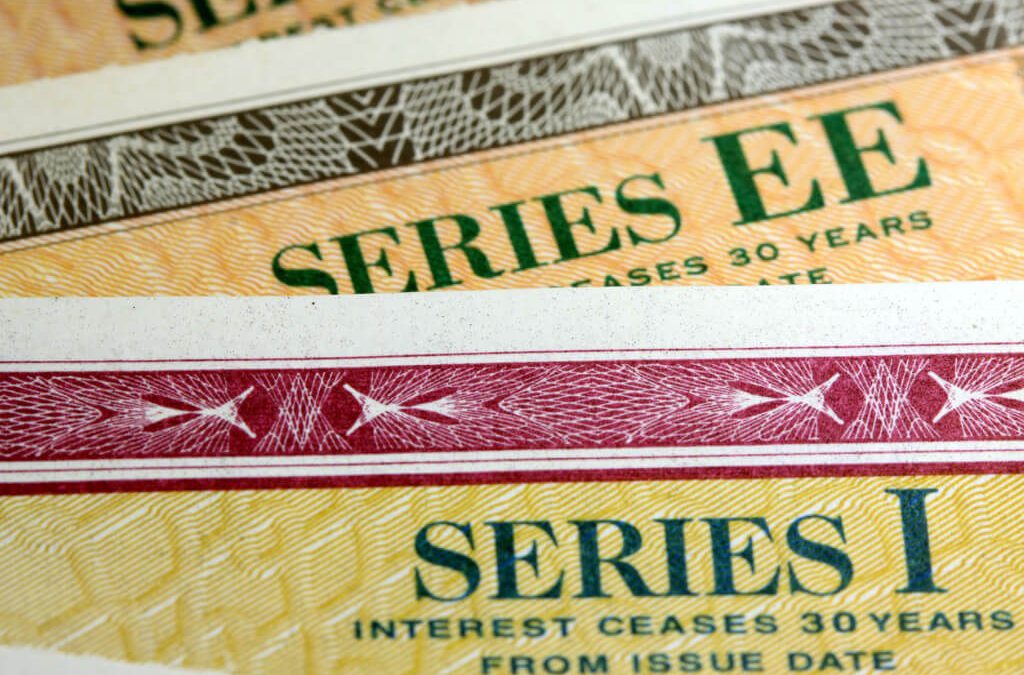Should You Redeem Your Savings Bond? Use This Calculator
Purchasing U.S. savings bonds can be one of the safest ways to earn money on your savings, as a savings bond’s value is backed by the full faith and credit of the U.S. government. They can also offer tax advantages over similar products, such as a savings account or certificate of deposit (CD).
Although you might not earn a lot of interest, the guaranteed return can make them an important part of some people’s portfolios. Learn more about how savings bonds work, how to calculate their value, and how to redeem.
How Savings Bonds Work
When you buy U.S. savings bonds, you’re lending the government money, and it will pay you back with interest. How much interest you’ll earn depends on the type of bond you have and how long you’ve held onto it.
Today, you can buy two types of U.S. savings bonds—Series EE and Series I.
- Series EE savings bonds have a fixed interest rate (Series EE bonds issued before May 2005 may have a variable rate). Starting with a $25 bond, you can buy up to $10,000 per year online at TreasuryDirect.gov. Interest gets added to the bond monthly, and the government guarantees that the bond will double in value after 20 years. After 30 years, EE savings bonds mature and stop accruing interest.
- Series I savings bonds have a fixed interest rate plus a variable rate based on inflation, which can change every six months. Although deflation could lead to a negative variable rate, the lowest your bond’s rate will go is 0%. You can buy Series I savings bonds online starting at $25 or purchase paper bonds starting at $50 with your federal tax return, up to $10,000 and $5,000 per year, respectively. The government doesn’t guarantee earnings, but interest can accrue for up to 30 years.
While these are the only types of savings bonds you can buy today, there are other types that you may have bought or been given in the past. You can use a savings bond calculator to find out how much they’re worth and determine if you want to redeem them now or wait.
Figuring Out How Much Your Savings Bond Is Worth
Savings bonds don’t provide a steady flow of income like a dividend-paying stock. Instead, accrued interest is added to the savings bond’s value, which you’ll receive when you redeem the bond.
With both Series EE and Series I bonds, the interest accrues monthly and compounds twice a year. You can use a calculator — like this savings bond calculator provided by TreasuryDirect — to determine the value of your savings bonds. You’ll need some information to get started:
- Series type
- Denomination
- Bond serial number
- Issue date
You must hold onto Series EE and I bonds for at least 12 months before you can cash out. Additionally, if you cash out one of the bonds before five years, you’ll lose three months’ worth of interest as a penalty.
Additionally, if you have Series EE bonds, don’t forget about the guaranteed doubling of value after 20 years. Although the interest rate may be low — it’s only 0.10% for bonds issued from May to October 2020 — you’ll still earn an effective rate of 3.5% if you hold the bonds for 20 years.
How to Cash in a Savings Bond
You can cash in electronic bonds online at TreasuryDirect.gov. Or, if you have paper bonds, you can cash in at a local financial institution, such as a bank or credit union.
Savings bonds don’t expire, but Series EE and I bonds mature after 30 years, which means bonds issued before 1990 won’t accrue any more interest and there’s little reason to hold onto them. Sometimes, this may happen without you realizing it, such as if someone gave you a bond when you were a child.
As of the end of 2019, more than $26 billion dollars worth of unredeemed savings bonds had matured and stopped earning interest. You can use Treasury Hunt to search for bonds based on your tax identification number and state of residence.
When you cash in a bond, you’ll be issued a 1099-INT with a record of earned interest. Although you don’t have to pay local or state taxes on the earnings, you may need to pay federal income taxes.
You may also want to cash in a bond even if it hasn’t matured yet if you have a good use for the money. For example, eligible bondholders can avoid paying federal income taxes if they cash in and use the funds for qualified higher education expenses.
Or, you may want to cash in bonds if you need the money for living expenses during retirement or if you have a better investment opportunity elsewhere.
Bottom line: If you don’t need the money now and the interest is still being added, you might want to stow savings bonds in your safe deposit box until they fully mature. But if those bonds you got from as birthday gifts from your well-meaning extended family have matured, cash in and move those earnings to a higher interest investment.
Quicken has made the material on this blog available for informational purposes only. Use of this website constitutes agreement to our Terms of Use and Privacy Policy. Quicken does not offer advisory or brokerage services, does not recommend the purchase or sale of any particular securities or other investments, and does not offer tax advice. For any such advice, please consult a professional.



